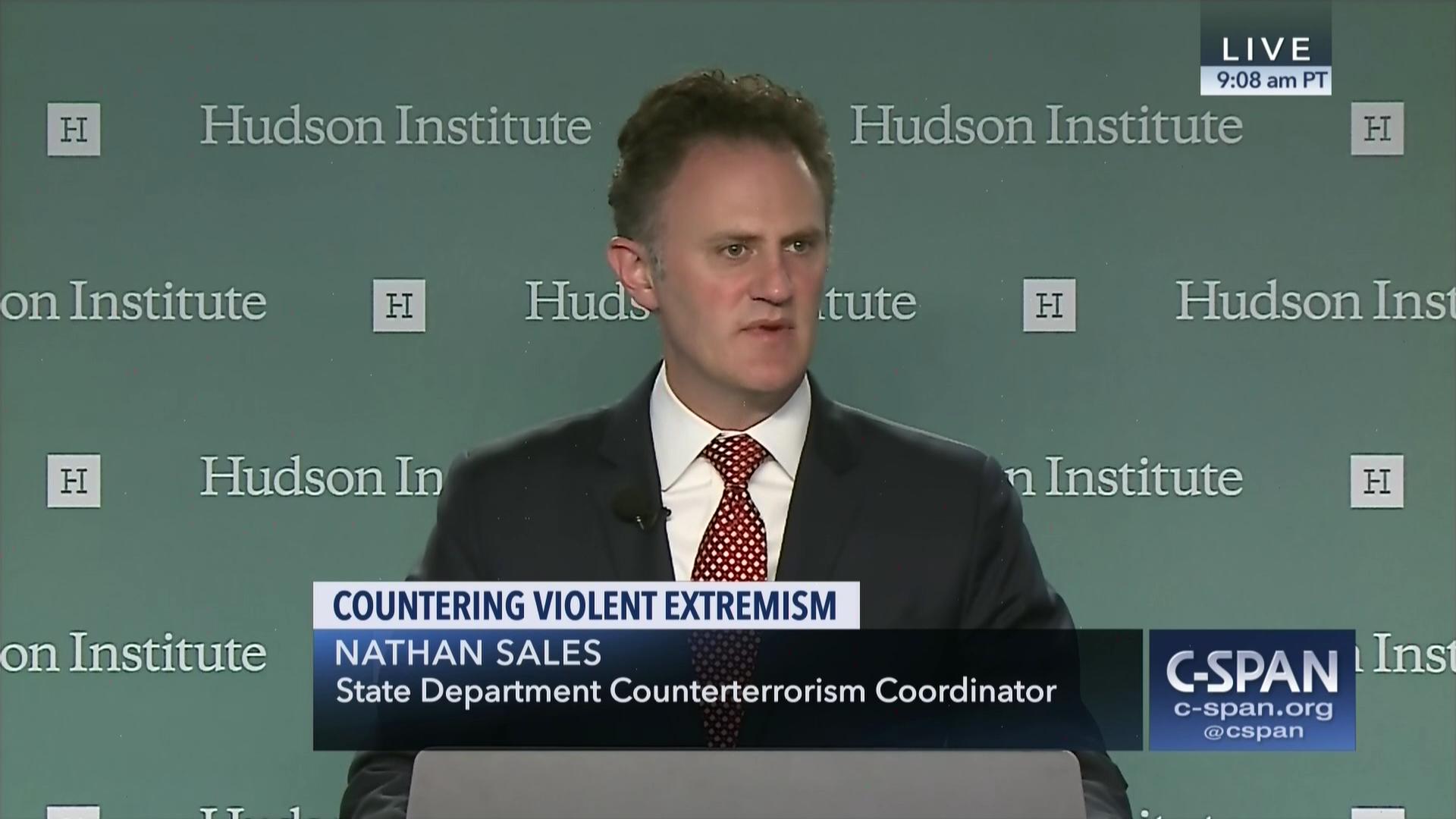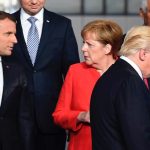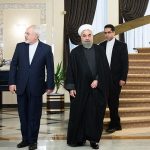by Paul R. Pillar
The history of U.S. administrations manipulating the issue of terrorism for purposes unrelated to terrorism predates Donald Trump’s presidency. One reflection of this history is the official U.S. list of state sponsors of terrorism, which has never tracked very closely with the reality of specific states being complicit or not complicit in international terrorism. Some complicit states have never appeared on the list because they were considered U.S. friends or allies—such as Saudi Arabia with its nurturing of Sunni radicalism, Pakistan with its support to extremist groups in Afghanistan, or left-wing governments in Greece that condoned radical leftist terrorism. Other states have been taken off or put on the list to send messages on topics other than terrorism. Iraq, for example, was taken off when the United States was tilting toward Iraq during the Iran-Iraq War, then returned to the list when Iraq invaded Kuwait. North Korea was belatedly taken off the list 10 years ago and put back on last year, again not because of any change in terrorist behavior but for other reasons—in this case having to do with the objective of denuclearization.
The most flagrant and damaging manipulation of the issue of terrorism was the George W. Bush administration’s exploiting of American outrage over 9/11 to muster support for the Iraq War by conjuring up an “alliance,” which in fact never existed, between Saddam Hussein’s regime and al-Qaeda. The promoters of that war went so far as to establish staff inside the Pentagon to discredit relevant work of the U.S. intelligence community, which had correctly concluded that there was no such alliance.
Now the Trump administration is similarly manipulating the terrorism issue, to stir up as much hatred as possible against Iran rather than to convey an accurate picture of international terrorism today and where and how Americans are most likely to fall victim to it. This was evident in the rollout last week of the latest edition of the congressionally mandated annual report on international terrorism.
Past Involvement
Iran certainly has done terrorism and has given good reasons to be placed on the list of state sponsors, although one must reach back into an ever-receding past to find those reasons. (Saddam Hussein’s Iraq also had done some real terrorism, but not with al-Qaeda.) The first big encounter between the United States and the new Islamic Republic of Iran was a major act of terrorism: the taking of hostages at the U.S. embassy in Tehran in 1979. Also early in the Islamic Republic’s history, Iranian assassins periodically killed dissident Iranian expatriates in Europe and elsewhere, but those murders ceased years ago. The last time Americans became victims of an incident that meets the State Department’s legally codified definition of terrorism (which involves violence against noncombatants) and in which Iran probably played a role was more than two decades ago: the bombing of the U.S. military installation at Khobar Towers, Saudi Arabia in 1996. (The U.S. servicemen who were the targets of that attack were deemed noncombatants because they were resting in their barracks at the time—although some observers skeptical of this coding note that the servicemen were part of a larger military mission.)
The phrase “leading state sponsor of terrorism” has become a label that rolls easily and automatically off the lips of Secretary of State Mike Pompeo and other U.S. politicians. The label has become an almost de rigueur attachment to any American mention of Iran. As with other such labels that are automatically invoked, this one has become a substitute for, rather than an accompaniment to, careful attention to facts and evidence.
The administration’s attempt to paint Iran as a major problem in international terrorism is badly misleading. This is readily apparent in looking at any picture of terrorism that includes the groups that have to be in the center of that picture—al-Qaeda and the Islamic State (ISIS or iS)—and that necessarily are mentioned up front in the up-front part of the State Department report. Iran is on the opposite side from these groups on almost any political, ideological, and sectarian divide that matters. Iran also is on the opposite side from those groups on multiple Middle Eastern battlefields. This is true in Iraq, where Iran has provided more help than any other outsider in freeing western Iraq from the grip of IS. It is true in Syria, where Iran aids a Syrian regime that is now targeting the rebel redoubt in Idlib province in which the most powerful group and de facto local government is the Syrian affiliate of al-Qaeda. It is true in Yemen, where the Houthi movement that has received Iranian aid is one of the fiercest opponents of al-Qaeda in the Arabian Peninsula, the group that has come closest to accomplishing a post-9/11 mass-casualty attack in the United States.
Iran has paid a price for its opposition to these terrorist groups, most dramatically in June of last year, when an IS attack on the Iranian parliament and the mausoleum of Ayatollah Khomeini in Tehran killed 17 civilians and wounded dozens more. An equivalent in the United States would be an IS attack on the U.S. Capitol and the Washington Monument. Against the backdrop of such a revenge attack, think of how inappropriate, not to mention outrageous, it would be to talk of the United States as being on the wrong side of international terrorism.
Stretching the Story
The Trump administration’s new terrorism report and the accompanying pitch by Coordinator for Counterterrorism Nathan A. Sales illustrate how much the administration tries to stretch the canvas to put Iran in the center of the picture of international terrorism. The administration reaches, for example, back into the past. Sales, in trying hard to come up with any specific incidents, mentioned an attack attributed to Lebanese Hezbollah against an Israeli tourist bus in Bulgaria in 2012. (The State Department report, being annual, is supposed to describe current international terrorism, not just be a history of what happened years ago.)
The section about Iran in the portion of the report on state sponsorship of terrorism is unable to name any specific, current or recent, attack that Iran instigated or executed. The observations in that section, when not immersed in generalities such as “provide cover for associated covert operations, and create instability in the Middle East,” fall mainly in two categories. One includes references to Iran’s aid, partly furnished through supported militias, to sides it favors in a conflict such as the Syrian civil war. Of course, many other parties, including insiders as well as outsiders, are fomenting and executing grievous amounts of violence in that war. Most such politically motivated violence is open warfare—and as such will not show up in the State Department’s statistics about terrorism—even though, as with Saudi Arabia’s indiscriminate bombardment of Yemen, it kills far more innocent civilians than anything that does show up in those statistics.
The other principal type of observation concerns Iran’s alliances with groups such as Hezbollah and the Palestinian group Hamas. Those groups certainly have done terrorism, but they are much more than terrorist groups and are part of broader political conflicts and political systems where Iranian motivations for the alliances are to be found. Hamas won the last free and fair election held among Palestinians, and it represents the side in the Israeli-Palestinian conflict that most Arabs support (which is partly why Iran supports it as well). Hezbollah is one of the most important political actors in Lebanon, where it has seats in the legislature and has participated in governing coalitions.
The report states, without elaboration, that Iran “sponsored cyberattacks against foreign government and private sector entities.” When it comes to Iran and cyberattacks, occupants of the U.S. glass house probably need to be careful about throwing that particular stone in a report about terrorism, especially given the direction the Trump administration appears to be heading on that subject.
The report also states that Iran “remained unwilling to bring to justice” al-Qaeda members in Iran, with a further suggestion that Iran somehow had been facilitating that group’s operations. Left unstated is that al-Qaeda members who turned up in Iran were kept under a kind of house arrest. If Tehran did not turn them over to someone else it was because the Iranians hoped to use them as bargaining chips to bring to justice violent members of the cult/terrorist group known as Mujahedin-e Khalq (MEK), whose attacks (besides claiming American victims) have been responsible for years of bloodshed in Iran.
Sales stated, “The threats posed by Iran’s support for terrorism are not confined to the Middle East; they are truly global,” and made reference to “caches” of weapons and explosives in disparate places. Regardless of this assertion, Iran is no global power and has consistently demonstrated that its interests are sharply focused on its own region. Violent actions it has taken or abetted farther abroad—going back to those assassinations of dissidents in the early years of the Islamic Republic—have been intended to meet what it sees as threats closer to home. Rather than Tehran looking for trouble far afield, any long-distance terrorism involving Iran has been in direct response to political violence that others have inflicted back in the Middle East. Hezbollah’s bombing of the Israeli embassy in Buenos Aires in 1992, for example, was in retaliation for Israel’s assassination of the group’s secretary general. Some other attacks against Israel-related targets early in this decade (including that bus bombing in Bulgaria) were attempts to respond directly to the serial assassinations of Iranian nuclear scientists. According to the State Department’s definition of terrorism, if not its policy-guided pronouncements, those assassinations were every bit as much terrorist acts as were the attempts to retaliate for them.
The arrest in Germany earlier this year of an Iranian official for alleged involvement in a plot to attack a meeting in France leaves unanswered questions about how far such a plot may have gotten. But taking the reports at face value, if such an attack had occurred, it too would have been retaliation for violence, including terrorist violence, inflicted against Iranians. The death toll from attacks inside Iran by the MEK—a meeting of which reportedly was the intended target of the plot—numbers in the thousands and by some estimates reach five figures.
Iran Again a Target
This past week, Iran again became the victim of mass-casualty terrorism. An attack during a military parade in the southwestern city of Ahvaz killed at least 25, including civilians, and wounded dozens more. The Trump administration could barely bring itself, before a belated State Department statement, to get away from its posture that Iran should always be considered a problem in terrorism and never a victim. Nikki Haley said Iran should “look in the mirror” for the causes of the attack.
Again, imagine that an equivalent attack occurred in the United States. (Imagine also that an Iranian government response, instead of expressing sympathy for the victims, as Iran did after 9/11, was to say “look in the mirror.”) American public and political demands would require whatever administration was in office to strike out forcefully somewhere, against someone. The United States undoubtedly would use the most modern military hardware to do so.
Iran, too, will try to respond to the Ahvaz attack (responsibility for which currently is unclear), and already has promised to do so. Lacking cruise missiles and modern attack aircraft, Iran will use the means available to it. This likely means methods that, unlike overt military attacks, would meet the terrorism definition. But this will still be a response to someone else’s violence, not a rogue state looking for trouble.
The Bush administration’s misuse of the post-9/11 fear of terrorism to drum up support for the Iraq War carries a final lesson about the costs and counterproductivity of such misuse. Before the war there was no alliance between Iraq and al-Qaeda, and the group al-Qaeda in Iraq did not exist. As a direct result of the U.S. invasion and subsequent occupation and turmoil, al-Qaeda in Iraq was born. After a change in name and leadership, it became the Islamic State.






The biggest form of terrorism, is the terror the Ayatollahs have inflicted on 80 million Iranians for 40 years.
I read the State Dept report once. Pillar captures the tone perfectly. It reminds me of 2002 when the U.S. govt desperately made the case that Saddam was the Nexis of terrorism in the M.E., remember that? We droned on and on about how someone got medical care in Iraq and said, ‘AHA! That’s the problem!’
There have been over 100 terrorist attacks causing over 1,000 fatalities in Europe and none of them are connected to Iran or Hezbollah. All of them were by ISIS or Al Qaeda sympathizers linked more closely to the Gulf States. Dwelling on a single assassination plot in Germany that never happened, with dubious ties to Iran, is not seeing the forest through the trees.
Mostofi need to get a job. This was a respectable forum until he showed up.
Thank you Dr Pillar for another sound and fair reporting! I have to further clarify one thing though. And that is that Terrorism is the western world bastard child! Reagan created the Mojahedins in Afghanistan, armed them to the kilts, and enabled them to stand up to the Soviets for their illegal invasion of that country. Once the Soviet forces were driven out of Afghanistan by the Mojahedins Reagan gave them Choices of dismantling and power sharing with the Afghani forces or get funding and support from another country. Since OBL was leading the pack and he knew from where or whom in Saudi he can get help! Once they received Saudi support the Mojahedins turned on the US and renamed themselves as Al-Qauideh! Of course this was the 2nd terrorist org in the world and as you the first one was formed by Monachem Bagin to bring down the Hotel David as a pretext for creation of Israel!
Since then and as result of illegal invasion of Iraq another group was created from the captured Saddam’s military personnel who were in prison in Baghdad which they called themselves “DAESH” or ISIS. This group was completely financed by the Saudi, trained and armed by the Israelis! Of course many other proxy terrorist groups have been created in the ME/NA as needed to do the dirty work and also to create false flags over the past decade. Bottom line the west has a lot of explaining to do to the world! Without any explanation by the west, trust of others in west will continue to diminish!
Mostofi already has a job! He publishes, as Trump calls some of the media, a fake and propaganda newspaper to manipulate uninformed pro-shah Iranians in the NE region of the USA. Many thanks to the freedom of speech which allows this guy to spread garbage around and get paid for it.